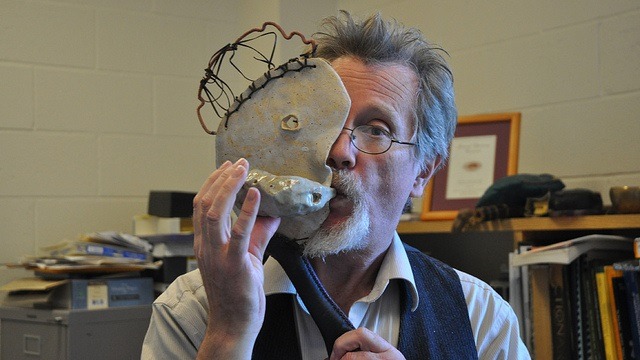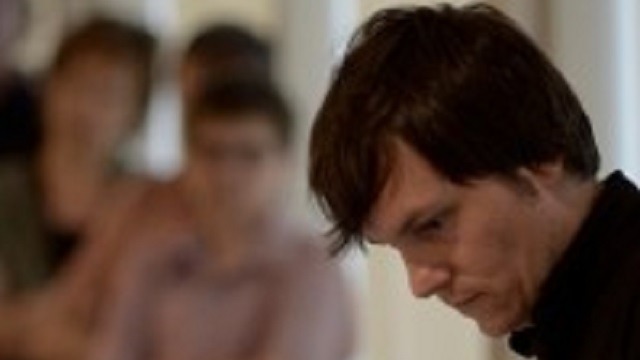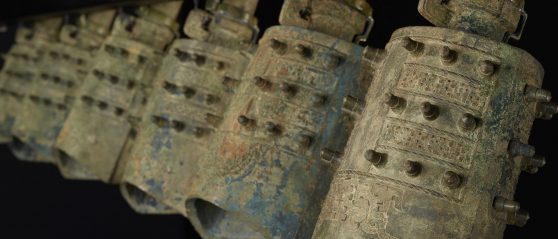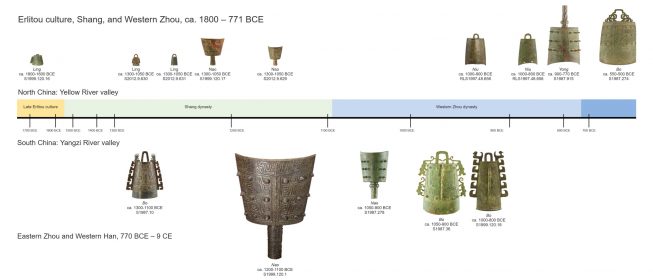October 14, 2017–July 5, 2021
-
Dates
-
Location
Arthur M. Sackler Gallery | Gallery 25
-
Collection Area
Chinese Art
Bells were among the first metal objects created in China. Beginning over 3,500 years ago, small, primitive noisemakers grew into gongs and further evolved into sets of hand bells for playing melodies. Further, centuries of technological experimentation resulted in more sophisticated bells that produced two pitches when struck in different spots.
Variations in size, shape, decoration, and sound also reveal regional differences across north and south China. By the late Bronze Age large sets of tuned bells were played in ensemble performances in both areas. Cast from bronze, these durable bells preserve valuable information about the character of early Chinese music.
Today we can use technology to explore these ancient instruments and to explain their acoustical properties, but we know little about the sound of this early music. To bring the bells to life, we commissioned three composers to create soundscapes using the recorded tones of a 2,500-year-old bell set on display. Each of them also produced a video projection to interpret his composition with moving images that allow us to “see sound.”
Struck Bronze
Hugh Livingston, a cellist and composer living in Oakland, California, put the voiceless bells back into conversation.
Alternating piano gestures and bell tones create a sense of opposition, disconnect, and anticipation. Drone tones derived from the decaying bell tones sustain the bridge across time. The visual component of the composition spins threads of color which modulate with the richness of the overtones, gently blowing in a breeze as the bells’ subtlety is given a graphic presence.

River of Bells
Norman Lowrey, Professor Emeritus of Music at Drew University in New Jersey, is an unabashed animist. His soundscape evokes a powerful connection between the bells and nature.
After initially thinking that serious enhancement of the tone samples was necessary, I’ve decided to apply very little, coming to appreciate the gritty and even earthy sound that was either the result of the bells themselves or the recording quality, or both. The sound of the bells provides an excellent resource for helping to reveal the sacred essence in the mundane Northern New Jersey landscape in which I reside.

Striking Re-semblance
Doug Van Nort, an artist, researcher, composer, and improviser, is Canada Research Chair at York University in Toronto.
In this piece, all sounds are purely derived from the bell set. I chose to focus on extending harmonic layers drawn from the bells, with rhythms that arise both from looping the bells as well as extending the inner textural quality of the bell sound itself. The visuals by my collaborator, Elysha Poirier, augment this approach by focusing on an impressionistic styling that is both driven by the sound and hints at the physical properties of the bells.

Experience this exhibition’s interactives
Read the Press Release.
Detail, set (bianzhong) of six yong bells with dragons; Eastern Zhou dynasty, late; Spring and Autumn period, ca. 525–475 BCE; Gift of Arthur M. Sackler; S1987.4–.9
- Jump To...






